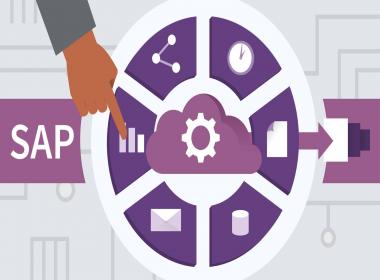
In simple terms, it is one of several new technologies that allow users to access online resources via a common network like the internet. The technology was once only available to large businesses, but today almost every business has access to such technologies. But what is Cloud Computing
Cloud Computing is the online availability of computing power, including hard disk space and data storage, without direct user management. Large cloud networks often contain numerous operational regions, each region having a different operating system and dedicated to storing and serving data. Some cloud networks may be public, and others are private - some may even be both. In other words, any website owner can access their own virtual data centers.
Infrastructure
One of the key components to any infrastructure - such as a large database server, or an enterprise file server - is a virtual machine. Virtual machines (VMs) are isolated platforms with virtual hardware that run just like an actual physical computer. A user can simply log into the VDI, create a user account, and begin working in their virtual environment.
In fact, with modern virtualization technologies such as Xen, VMware, and Hypervisor, a single physical server can be divided among many VDI's, each performing just a small fraction of the work normally needed on each physical server.
Cloud computing uses a centralized server infrastructure, similar to a colocation facility, but allows for elasticity and portability. A user will only pay for what they use, and thus will not be required to upgrade or even maintain their storage, application, or web service. Instead, the cloud system will handle all elements automatically, and will automatically make changes to the infrastructure based on current usage.
Features of Cloud Computing
An important feature of cloud computing that was not discussed much during the previous discussion is 'Software as a Service (SaaS). With SaaS, a company can rapidly develop and deploy applications without purchasing physical hardware.
Rather, SaaS providers provide the development platform, which is then controlled by a web host provider. Providers can also provide support for the development tools, and can quickly scale up or down the SaaS application when growth demands dictate it.
Cloud computing has an impact on the way IT administrators approach the day-to-day management of an enterprise's computing environment. Typically, an IT administrator will manage the day-to-day software configuration, security, bandwidth, memory, and hard drive utilization of the organization's servers. You can also read about what are cloud transformation in this post.
Benefits
With cloud provider servers, these administrators will need to spend more time managing the specifics of the IT infrastructure. As opposed to on-premises infrastructure management, where a single point of contact exists for updates, SaaS provides a much more seamless interface for IT administrators. Because cloud providers typically host the infrastructure in a data center, remote management is always possible, and administrators can easily identify performance issues and fix them as needed.
The benefits of multi-cloud services are fairly well understood. The most significant benefit of multi-cloud services is that they can be scaled up and down as required. With this capability, organizations can rapidly adjust their computing infrastructure, as bandwidth requirements change or new applications are developed.
Because these services are flexible, organizations can quickly adapt to increased loads without affecting existing applications. This also enables organizations to make changes to their infrastructure without having to completely replace and recreate the applications.
Final Words
Perhaps the largest drawback of using private cloud services is the high costs involved. In some instances, the costs of using cloud infrastructure can be up to three times higher than what businesses would pay in the traditional data center model. Since most cloud providers offer a variety of different services, such as software as a service, self-service, or a hybrid model, the initial outlay for cloud infrastructure can be significantly higher than what is required by an enterprise.
However, this cost savings can quickly be recouped as demand increases and the provider utilizes its ability to offer more services at lower costs. Additionally, cloud providers often provide guaranteed service level agreements that require businesses to pay only for services that are used.
Also read about:
PASSPORT SEVA PASSPORT APPLICATION PROCESS
HOW TO REGISTER YOUR BUSINESS TO UDYOG AADHAR REGISTRATION
WHAT IS E DIGITAL SIGNATURE







